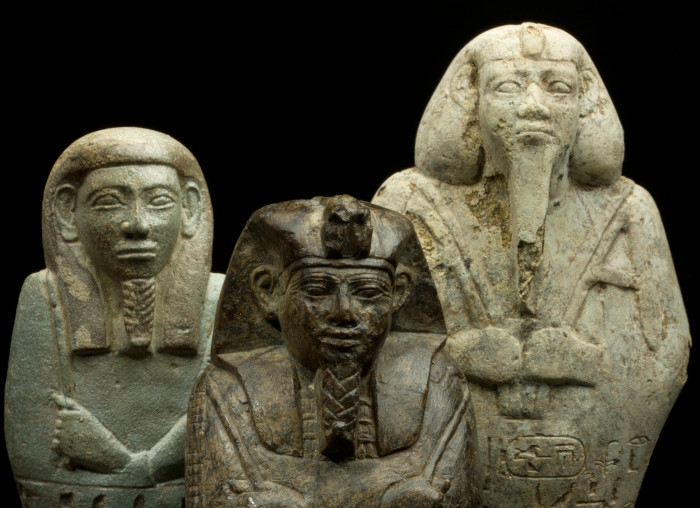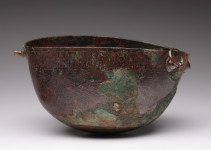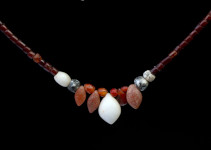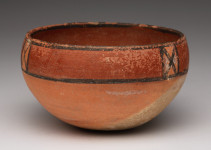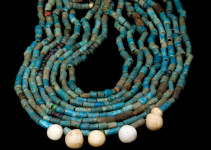Exhibitions
Departments
The fall of the Empire
The kingdom of Meroe reached a peak of prosperity at the beginning of the 1st century AD, during the reign of the royal couple Netekamani and Amanitare, who left behind a number of temples and inscriptions. Although 30 years after the death of the last Meroitic monarch known by name, Yesbokheamani (283 – 300 AD), the dead rulers were still being buried in the Northern cemetery of Meroe, the kingdom no longer existed in ca. AD 350. An inscription issued then by the Ethiopian king Aezana in Aksum reported on the war with people of Noba and the conquest of Al-Butana. However, whether the hegemony of Meroe collapsed due to an internal crisis or its fall was partly brought about by raiding nomads from the desert is a question that cannot be decisively answered.
The nomads build tumuli
The next two centuries, the so-called Post-Meroitic period, is one of the most mysterious and least recognised periods in the history of the Sudan. Monumental architecture and knowledge of writing disappeared altogether, and in the belt between Sennar and the Fourth Cataract stone burial barrows (tumuli) of the Tanqasi culture were erected. Today they are the only legible remains of the Noba nomad tribes who arrived in this region from the territories of modern Kordofan. An especially large and richly equipped burial ground was discovered in el-Hobagi.
The Blemmyes – a wild headless race
The situation is different in Lower Nubia, from Aswan to the Dongola area, where the Meroitic inhabitants of this lands are mixed with the communities of newcomers who had already settled there and speak Nubian language. Among them are the Nobatae, to whom Roman Emperor Diocletian in 296 AD entrusted the protection of the Egypt's southern borders, and the Blemmyes of the Eastern Desert, described by Pliny with contempt as the headless race whose eyes and ears grew directly out of their arms. The latter seem to be partularly attached to the Old Egyptian religion: each year they make a mass pilgrimage to the sanctuary of Isis on the Island of Philae. Archaeologists used to refer to these two groups as the X-Group, but nowdays it is used interchangeably with the term Ballana culture.
The nameless kings of Ballana and Qustul
It was in Ballana, and also at nearby Qustul, that the cemeteries of huge tumuli (up to 80 in diameter) with burials of tribal cheftains were found. The deceased were placed in a wooden bed and equipped with weapons, jewellery, every day items, house furnishings, and silver vessels – the grave gifts included beautiful crowns using the symbolism of Old Egyptian motifs and highly precious silver vessels imported from territories of the Roman Empire. The deceased chieftains were accompanied by their horses as well as burials of spouses, servants, and soldiers ritually killed during the funeral. Little is known about the political siginificance of these rulers. Probably we shall never know whether the two Nobatian rulers, Silko and Kharamazeye, mentioned in the Greek-language inscriptions on the temple walls in Kalabsha, had also been buried in one of the Ballana tumulus graves.
Nasza strona internetowa używa plików cookies (tzw. ciasteczka) w celach statystycznych, reklamowych oraz funkcjonalnych. Dzięki nim możemy indywidualnie dostosować stronę do twoich potrzeb. Każdy może zaakceptować pliki cookies albo ma możliwość wyłączenia ich w przeglądarce, dzięki czemu nie będą zbierane żadne informacje. Dowiedz się więcej jak je wyłączyć. OK, Rozumiem


